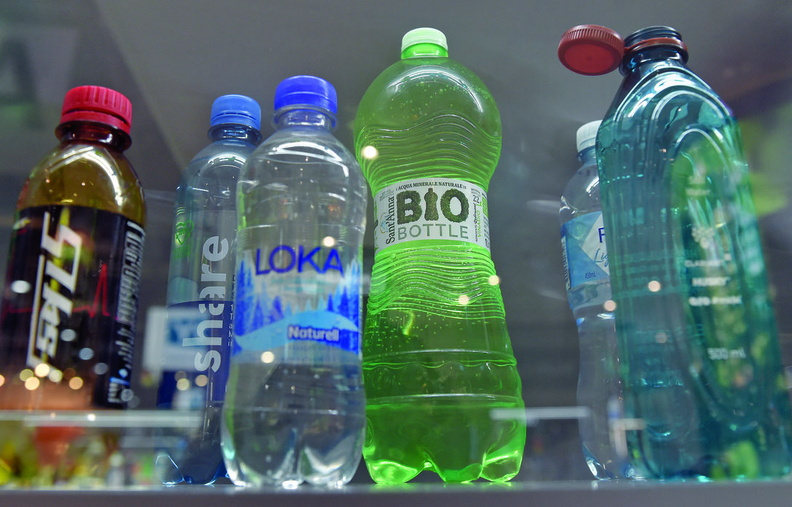Husky Makes Sustainable Packaging a Priority
Düsseldorf, Germany — Husky Injection Molding Systems Ltd. has tapped into a variety of markets for the plastics processing industry, but the Canadian injection molding equipment maker’s product portfolio for the food and beverage packaging sector is the major focus at K this year.
“Today, the competition is very strong, very fierce,” Henry Zhang, Husky’s director of marketing and market intelligence, said Oct. 17 during a media booth tour.
Zhang said that in order to succeed, companies such as Husky need to be flexible and efficient.
“You cannot be only one of them,” he explained. “You need to do both.”
This is especially for packaging, where one of the biggest challenges for customers today is speed to market.
“Everybody wants to bring their product to market fast because millennial’s, the youth, the consumers, they don’t want to wait,” Zhang said.
As part of the company’s commitment to sustainable packaging, the machinery maker signed the Ellen MacArthur Foundation’s New Plastics Economy Global Commitment. And at K, Husky is highlighting a range of systems that allow for post-consumer resin in packages. This includes PET preform molding systems that can handle 100 percent recycled content as well as post-consumer resin options for its multilayer technology.
Husky is also developing a new system focused on post-consumer resin that could enable customers to bring more than 60 million kilograms of PET annually into the circular economy within the next two years. The system works in conjunction with equipment that Husky said purifies recycled material and eliminates the need to repelletize.
“At Husky, we’re committed to sustainable packaging solutions now and in the future. Sustainability is in our DNA. It’s in how we operate,” Trevor Van Eerde, Husky’s sustainability manager, told journalists during the tour.
And sustainability starts with design, he said, adding that “PET is one of the poster [children] for the circular economy.”
To demonstrate this, the company is running the new HyPET HPP5e system, which it said delivers better energy savings, system reliability, PET preform quality and user-friendliness.
As part of the sustainable packaging theme, the system is making preforms made from 100 percent recycled PET. The 12.1-gram preforms are produced on a 96-cavity mold in a cycle time of 6.2 seconds.

Plastics News photo by Caroline Seidel
Husky Injection Molding Systems Ltd. is highlighting a range of systems that allow for post-consumer resin in packages. This includes PET preform molding systems that can handle 100 percent recycled content as well as post-consumer resin options for its multilayer technology.
HyPET HPP5e — launched in April — is primarily focused on the high-volume segment of PET, where production starts at 150 million preforms annually and goes up from there, said Glenn Chessell, general manager of PET and packaging systems.
“We relaunched the platform this year. … And, listening to customers, what they’ve been asking for is greater energy efficiency, faster speed to market, greater user-friendliness and more flexibility,” he said.
With the adaptive pressure control, Chessell said the HPP5e system can achieve 5-7 percent energy improvement on average over the same preform running on the previous generation platform, depending on preform design and the type of resin used.
Husky also debuted its NexPET flexible, lower cavitation system and mold for mid-volume production output. The system is designed to achieve high preform quality at low production costs. At K, the company is displaying a 48-cavity NexPET mold.
Husky is also taking orders for its individual servo valve gate, which it says provides electric, closed-loop control of valve stem motion.
The servo motor is proprietary to Husky and “extremely reliable,” according to Sean Hoy, vice president of sales and service for hot runners and controllers at Husky.
“It’ll outlast any mold,” he added.
Husky’s ISVG is ideal for family molds, two-shot molds, multimaterial products or large parts where valve stem sequencing is required. Target markets include automotive and medical.
“The things that you get out of an individual servo valve gate control is the ability to control speed, time, force and stroke individually from every drop, every valve stem,” Hoy said.
